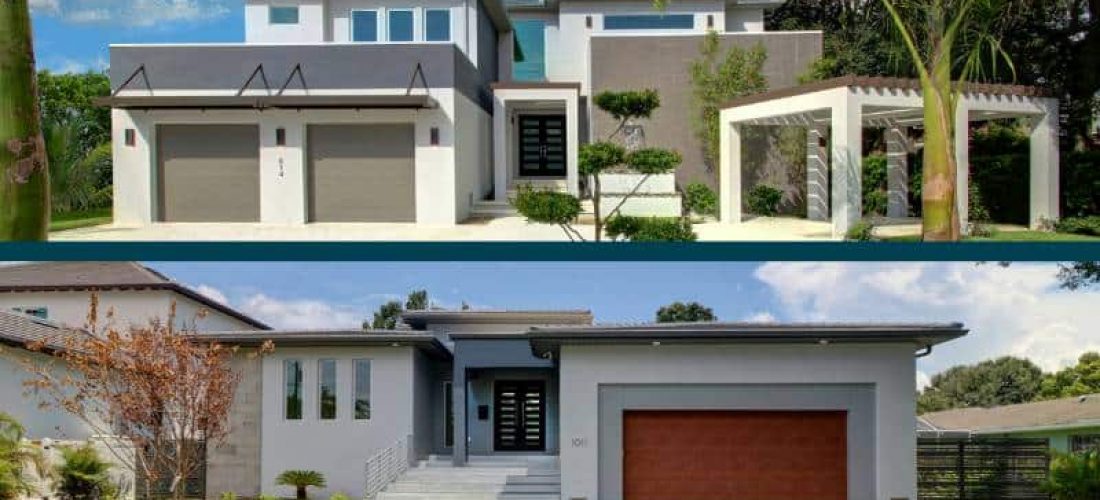Contemporary vs. Modern Homes: Understanding the Differences
Most times, when we hear the words “contemporary” and “modern,” we think of them as synonyms. And in most cases, we’d be right. But when talking about architecture, the two are not interchangeable. Understanding the differences will be helpful when you’re seeking to build a custom home in one of these styles.
What are the differences between these home types?
In architecture, the modern home is identifiable by its distinctively minimalist look. Consider it a reaction to the more ornate residential styles that preceded it. Modernism defined much of the architecture in the first half of the last century; think 1900 to the 1950s as the time period when it was among the dominant designs.
The contemporary home is based in the now. It’s one that reflects today’s design trends. And since fashions and tastes can quickly change, so too can the latest architectural inspirations for homeowners. While contemporary architecture will sometimes borrow from the modernist and other traditions, there are some important differences, as we’ll soon see.
The modern home
A house built in the modern style can often be identified by its clean horizontal and vertical lines set at right angles and its unadorned presentation. Its minimalism is seen as the expression of the idea that form should follow function. Modern homes came about in part because of advancements in the production of building materials, including plate glass. Among the features that dominate the modern style:
- Open floor plans
- Vast sections of large windows or glass walls.
- Asymmetrical arrangement of its structural components
Through its open floor plans and expanses of large window panels, the modern home is meant to be functional while connecting its inhabitants with the outdoors. Both inside and out, you notice the well-defined lines and geometry of the modern house. Many have flat or gently sloping roofs. Inside, the previous distinctions between different areas of the house become blurred. It’s up to the homeowner to define their areas, which will often blend into one another, making it easy to experience the home as one continuous living space.
The contemporary home
Contemporary homes can’t be defined as easily in terms of style. That’s largely because they’re designed to reflect the latest innovations and trends. They are all about the now. They aren’t neo- versions of older styles, though they may make use of established styles and add new elements. Because trends can vary from place to place and among architects, the contemporary style also varies even within the same relative time frame. But in general, a contemporary home is often one that is:
- Eco-friendly (energy efficient; makes use of recycled materials)
- High tech. Features may include voice controls and automated systems for lighting, audio, video, and climate control.
- Built in part with non-traditional materials or applies traditional materials in interesting ways
Like the modern home, the contemporary home often values minimalism, open floor plans, and clean lines. But as you’ve seen, there are some important differences. Besides the technological features that distinguish it, a contemporary house often looks like a work of art or has an unconventionally practical, sometimes industrial presentation that makes it stand out from the rest.
What suits your style?
If you need help in figuring out the design of your next home, we can help. Ask LaBram Homes about creating your perfect custom home. Whether you prefer contemporary, modern, or any of the dozens of other styles, we can help shape your vision and deliver the house that expresses who you are and how you want to live.



